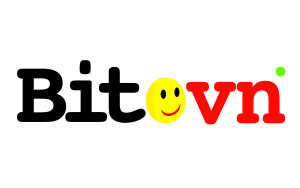- Planning to bring your community online?
- (+91) 987 370 1889
- hello@bitovn.com
How much does it cost to develop a facebook like app

A Social Network / Community for the Auto Enthusiasts
February 4, 2020
$200,000 in less than 60 days using BITOVN, how?
June 16, 2020The social networking phenomenon over the years has become popular and, therefore, the demand for engaging social media platforms is on the rise. Anything shared on a Social Platform spreads like a wildfire. And It’s no surprise that platforms like Youtube, Facebook, Twitter, Instagram have conquered the market of social networking/sharing platforms and the love of the users. What’s more, thanks to these platforms, social networking also became a powerful marketing tool for individual or business use.
Such a stunning success and ever-growing demand for interesting products have made many entrepreneurs think of how to make a facebook app of their own. If you’re one of them, then you’re at the right place!
To calculate the cost of the project, you need to be clear about functions, features, tech stack etc. it will have. The fact that the future applications stars are going to be social networks, let’s look at what the app building is actually about.
The Technology Stack
“What is the best tech stack to use for a social networking platform?” – Often, founders enter a dilemma when selecting their technology stack. There are multiple social networking platforms running on various tech stacks and so it becomes difficult to choose the best one for you.
Having migrated from PHP Core to PHP Laravel and then to Node.js, we have changed our tech stack multiple times. After learning the limitations from our previous tech stacks we would recommend any of the following:
- JS Stack
- Python Stack
“Why Node.JS though?”
Node.js, the server-side JavaScript-based software platform used to build scalable network applications, has been all the rage among many developers for the past couple of years. Node.js uses an event-driven, non-blocking I/O model that makes it lightweight and efficient, perfect for data-intensive real-time applications that run across distributed devices. Because of these advantages, there are many websites are migrating to Node.js and one of them is LinkedIn.
LinkedIn was initially built on Ruby which contained 60K lines of code, later in 2011, LinkedIn started to rebuild their core mobile service with Node.js aiming to improve the performance. This also reduces the lines of code to 2K.
As an MVP (we call it MDP – Minimum Desirable Product), we have defined the ideal technology stack that you can use for developing a Social Networking platform.
iOS application
- Language — Hybrid (Cordova)
- Networking — Meteor inbuilt Methods
Android application
- Language — Hybrid (Cordova)
- Networking — Meteor inbuilt Methods
Back-end development
- Language — Node.js (JavaScript)
- Framework — Meteor.JS
- Database — MongoDB
- Messaging — Meteor WebSockets
- API documentation — https://guide.meteor.com/
Third-party services
- Push notifications — FCM
- Geolocation — Google Maps
- Storage — Amazon S3
- Emails — Third party
The Basic Features and their Development Time
It’s time to dive deeper into the subject and understand how to build an app like Facebook. In most of the cases, it’s more reasonable to start off of an MDP / MVP (basic app features) and gradually add other new functionalities.
It may take thousands of dollars from your budget and months (if not years) of development to build facebook clone application empowered with the features it has nowadays.
Things are much simpler with MVP. You spend less money to build a similar app skeleton and launch it. Then you just track user reactions, analyze them, and make informed decisions concerning the further development steps with the ROI and Profit in mind.
Authorization
This is a common option for almost every user-focused application and if your goal is to create facebook-like app, you should offer your users at least two ways of authorization:
- Create a new account using a phone number / email.
- Sign in with existing social media account (Facebook, Gmail etc.).
In addition, there is an option allowing users to reset the lost password via email, phone or their account in the social media.
User Profile
Give your users some room for adding, customizing, and changing their profile information (e.g. bio, profile picture, etc.) Customization options are always a good idea. Most of the information in Profile is usually editable.
Social Wall / Feed
A social media feed encourages your users to engage with your brand and easily share your content. Through the wall, they’ll become aware of the current hashtags, posts and be able to join the conversation. If you have an important announcement to make, you can just post it on social wall and it will automatically appear on your platform for everyone to see. Users can Like, Comment and Share when participating in a discussion.
A social feed / wall encourages user-generated content and gives users confidence to voice their thoughts, opinions, voice, share content etc. A social feed on your website can help users to discover how other people use your platform in a real-life context.
User Posts: Text, Photo & Video
Give your users the freedom to share content and voice their thoughts, opinions, voice, share content etc. Enable users to easily share their posts and attach photos and videos to the feed and other places. Also, well-designed sharing facilities are so important to include to give users the connectivity with other platforms.
Messaging
A real-time messaging is the answer to question how to build an app like facebook and the proven way to give users what they want. Communication and Collaboration in a social networking environment, can be achieved with Real time messaging. Don’t forget that push notifications are the main component for this as they notify about all incoming messages.
Groups & Discussions
Allow your users to create and engage in online communities and discussions that allowed people to interact, collaborate, share content, and learn from each other. These spaces generate super valuable conversations and also find a super segmented public.
Advertisements
A major benefit of advertising on social platforms is its ability to reach the exact audience. This is the most targeted form of advertising. You can advertise to the users by age, interests, behavior, and location. If you really know your customers, you can use ads to engage them.
Another major benefit of advertising here, is that it is one of the cheapest and fastest forms of advertising. It drives immediate results. Brands can start reaching thousands of people on your platform today.
Blogs
Blogs have two main features designed to help you share ideas. You can either read/share an article published on the platform or write an article yourself. While users may share content regularly, blogs have the potential to become an important part of strategy.
Users may write blogs / articles for the following reasons – Networking, Hobby/Interest in Writing, Fame/Popularity, Advertising and Branding, To create awareness or get their voice heard, To connect with like minded people, Satisfy your creative side, To gain knowledge etc.
Events
An event is a calendar-based resource which can be used to notify users of upcoming occasions. Events can be created by anyone, and can be open to anyone or private. The creator can invite his/her friends, followers or members of a group.
Events are a great way to spread the word on upcoming events or occasions, since they are able to reach thousands of people in a short amount of time. The event also provides an “RSVP” list, which displays lists of invitees grouped by their response. Invitees are either placed in “attending,” “not attending,” “may be attending,” or “not responded” lists. When the date of the event approaches, it is displayed on the invitees’ home pages to remind them.
Search
You should also take care of search feature to make an app like facebook. It should be convenient and useful so that users could find anything they need. Search people, groups, events, blogs, posts marked with hashtags, etc.
Geo-Location
Geolocation is a must-have feature in case you want to build Social Networking app. Users should have an option for indicating where the photos / video were taken, where they currently are etc. Besides, other users should be able to see that place not only tagged on the media post but on a world map too.
Settings
If you build an app like facebook, it’s important to think through setting options to enhance the overall user experience. Give users an opportunity to adjust the app’s features: set language, enable and disable push notifications, use different modes (e.g. private posts/account), and so on.
Other Imp. Activities
The above mentioned duration focuses only on the development bit of the product, there are other important activities involved
| Type of work | Optimistic | Pessimistic |
| UI/UX Design | 108 hrs | 130 hrs |
| Admin panel development | 155 hrs | 215 hrs |
| UAT (User Acceptance Testing) |
MDP (MVP) Development Cost
Now that you know what it takes to build an app like Facebook, let’s get straight to topic of this blog – calculate its MVP development cost.
*Note* the estimates in this article includes cost and duration for the basic features only, which though are a good start for any social networking app.
Adding up all the aforementioned features, you will get around or more than 600 hours of Design, Development, UAT & Deployement. Though the man-hours calculated are more, these hours instead represent the equivalent Business Days due to a lot of work happening in tandem/parallel.
In order to translate hours into money, you should multiply this figure by an hourly rate of the software development agency rates.
Thus approx. between $8,000 and $10,000 for a social network app in its base avatar including design customizations and business flow changes in the base setup. Introduction of additional features may or may not further affect the total cost, based on their nature of complexity. Compared to any North American companies, they could charge you anywhere above $50,000 for such a platform.





